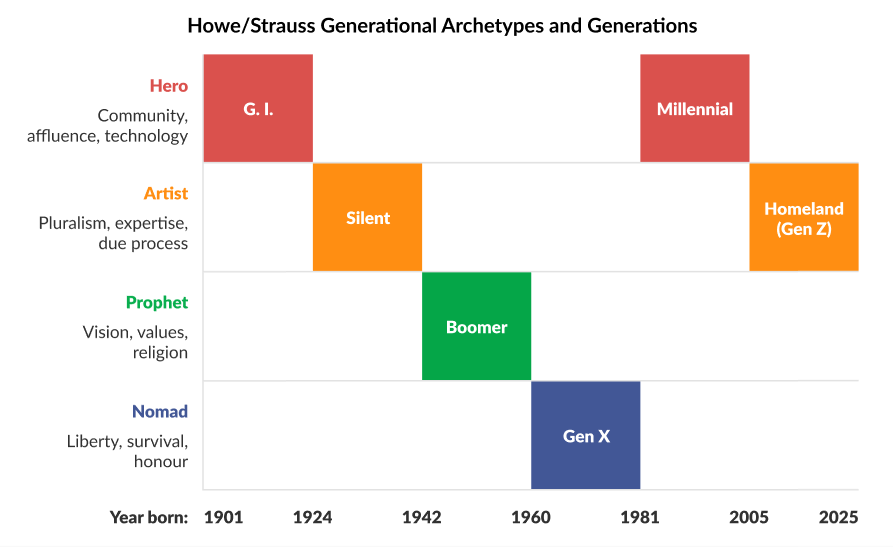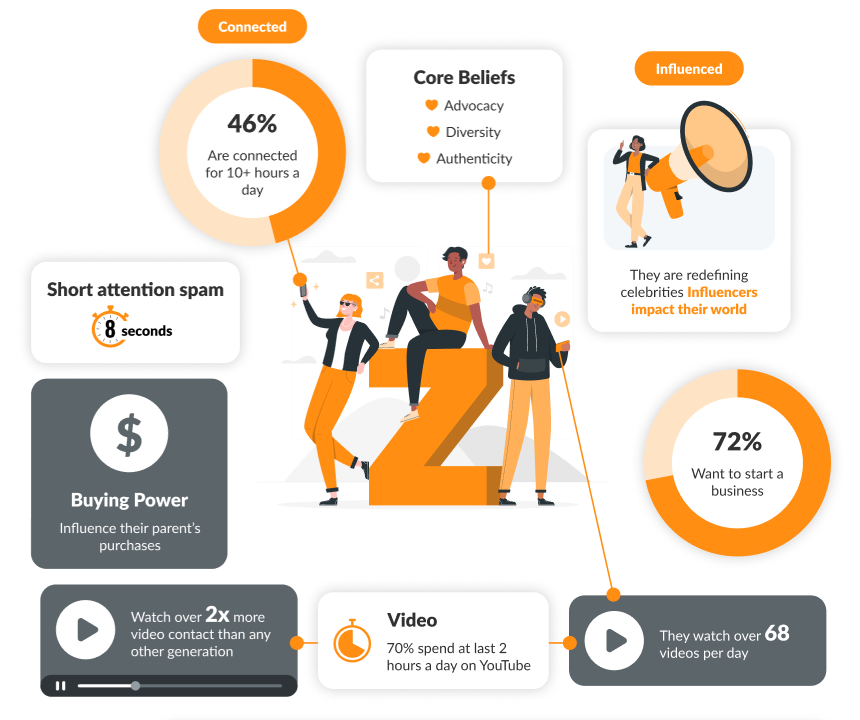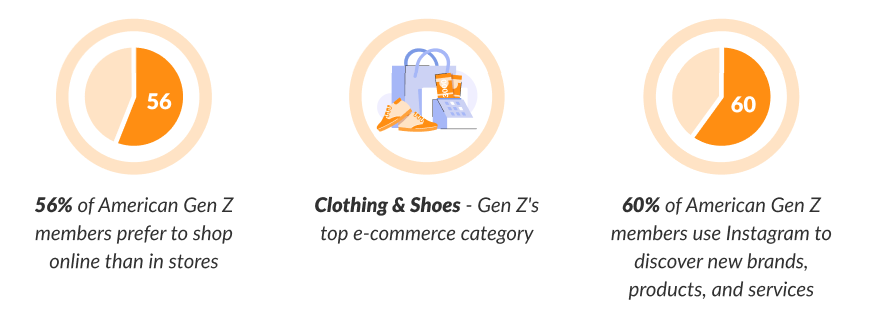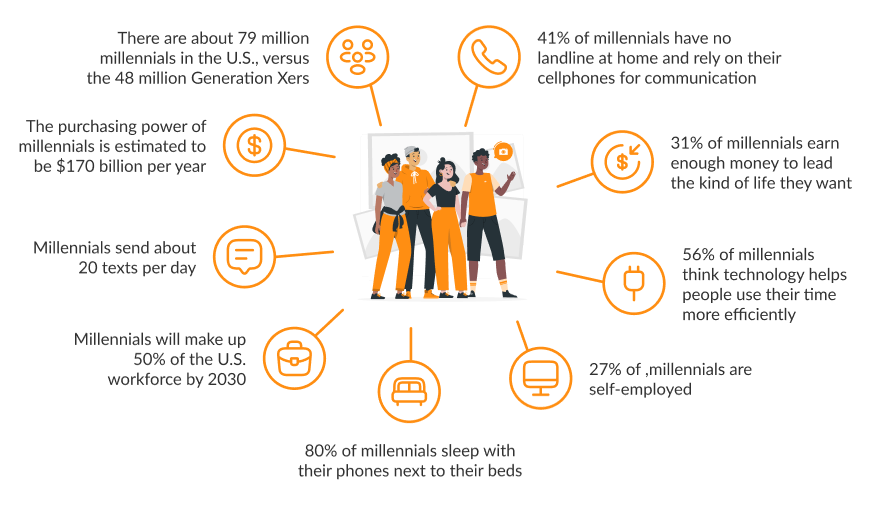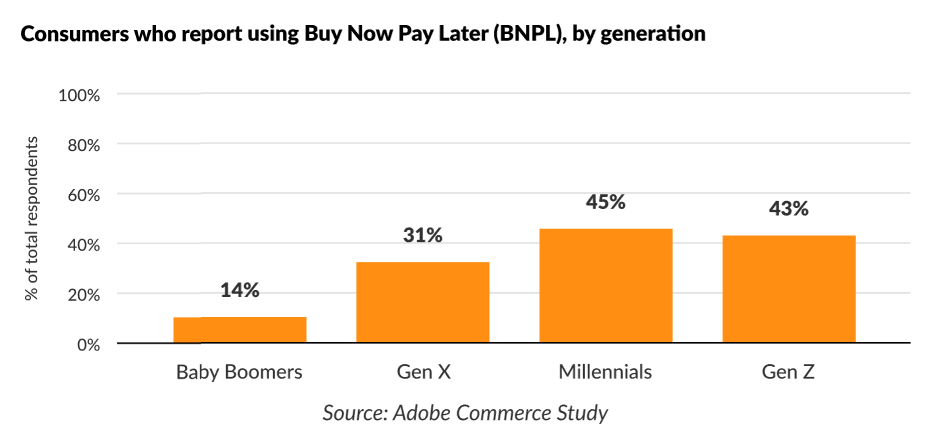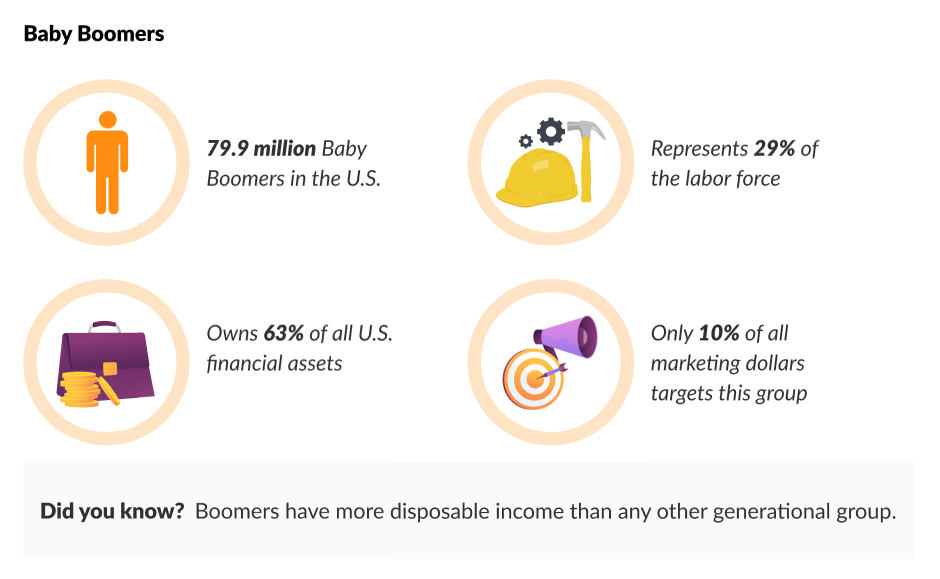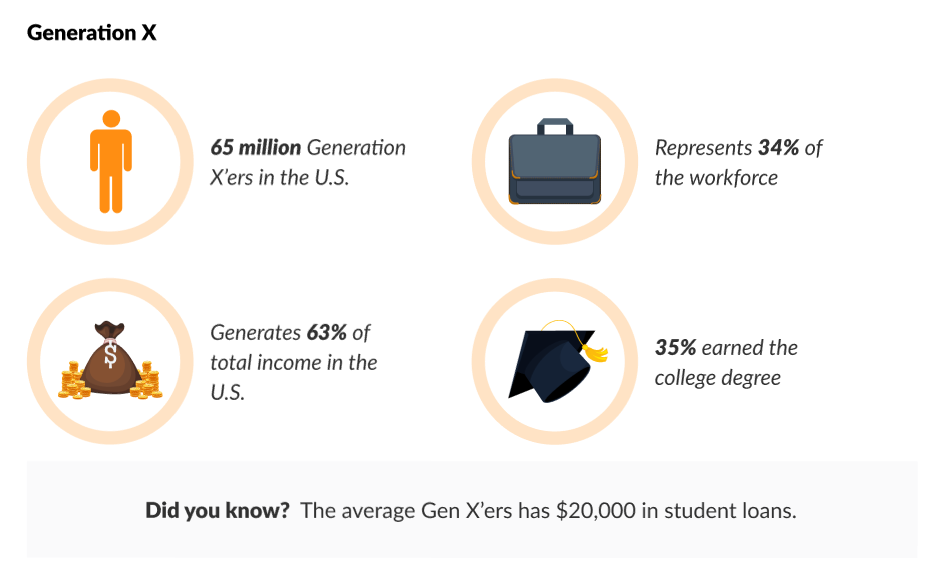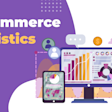
How Different Generations Shop Online
Understanding your customer starts with knowing their story and that story often begins with the generation they belong to. From Millennials who scroll and shop in the same breath to Gen Xers who favor functionality over flash, each age group brings its own mindset to the online checkout page.
In this article, we break down the key differences in how generations shop online, drawing from AMZSout’s monthly insight report—a must-read for sellers aiming to sharpen their strategy and reach the right audience with the right message.
Table of contents
Why Generational Theories Matter in E-Commerce
Generational theories aim to explain how groups of people born around the same time tend to share similar attitudes, values, and behaviors based on their life experiences. These theories help us understand societal changes and predict trends, which is useful for marketing, education, and policy planning. When it comes to the world of business, these theories can help us understand how each group thinks and behaves as consumers. By identifying these habits, companies can plan better marketing strategies and tailor their products to meet specific generational needs.
One of the most widely known theories is the Strauss-Howe Generational Theory, developed by historians William Strauss and Neil Howe. This theory proposes that generations follow a repeating cycle of four types, or “archetypes”, that recur every 80-100 years. These four archetypes are:
Prophets (e.g., Baby Boomers) – Visionaries focused on values and morality
Nomads (e.g., Gen X) – Pragmatic and independent, often growing up during times of social upheaval
Heroes (e.g., Millennials) – Civic-minded and confident, shaped by crises they help to resolve
Artists (e.g., Gen Z) – Adaptive and sensitive, growing up during periods of recovery or stability
These theories are important for understanding consumer behavior because each generation's experiences tend to shape their preferences. For example, members of Gen Z are highly digital and value authenticity, while Baby Boomers may prioritize loyalty and face-to-face interactions. This helps businesses create more effective marketing strategies tailored to each group's unique needs.
The main generation groups are:
Baby Boomers (born 1946-1964)
Gen X (born 1965-1980)
Millennials (born 1981-1996)
Gen Z (born 1997-2012)
Among these generations, Millennials and Gen Z do the most online shopping. Studies show that about 60% of Millennials and a growing 67% of Gen Z prefer to shop online due to convenience and product variety. These current shopping trends reflect evolving Millennial shopping habits, as both groups are more likely to use social media platforms and mobile apps to discover and purchase products—far more so than older generations.
On Amazon, Millennials and Gen Z make up the largest audience segments. That’s why in this article, we will focus primarily on Millennials and Gen Z as the key Amazon consumer groups as we explore their purchasing habits and how sellers can market to them effectively.
For example, Gen Z shopping habits tend to favor product categories that align with their values and lifestyle. These young consumers are especially drawn to sustainable products, trendy clothing, skincare and makeup, and the latest tech gadgets. Their shopping behavior reflects a strong interest in individuality, ethical consumption, and digital convenience—key insights for brands and marketers looking to tap into this influential generation of shoppers.
How do members of Gen Z shop?
Generation Z, also called Gen Z or Zoomers, are the group born after Millennials. Although their exact birth years vary, Gen Z generally includes those born from the mid-1990s to the early 2010s.
This generation grew up with smartphones and they have a unique way of using social media and technology. They often use platforms to find inspiration, research products, and connect with brands they like.
If you're looking for fresh product ideas to attract Gen Z customers, tools like the AMZScout Product Database can be incredibly useful. This tool allows you to explore trending items by filtering keywords, categories, and demand indicators. For example, you can search using Gen Z-relevant keywords like "Y2K", "reusable", or "aesthetic", and discover popular products that align with this generation’s preferences.
Welcome flexibility between home and work
43% prefer in-person communication
Strong preference for immediate feedback
Want their technology to be up to date
They want to help create a brand instead of consuming it
Make most purchases online
Gen Z shoppers tend to be less trusting of big companies compared to older generations. Instead, they prefer to follow popular influencers on platforms like Instagram and YouTube to help them decide what to buy.
According to a study by Google, 70% of teenagers who subscribe to YouTube channels feel that YouTube creators are more relatable than traditional celebrities. For many Gen Z consumers, these online personalities play a big role in helping them decide if a product is worth purchasing.
This is why sellers or brand owners should need to focus on transitioning from traditional digital marketing to influencer marketing.
Another thing that is quite specific to Gen Z is that they are constantly discovering and shopping. As the first digitally native generation, Gen Z is deeply entwined with digital technology. This heightened connectivity means they’re perpetually in shopping/browsing mode – as noted, nearly 40% of Gen Z respondents said they are constantly shopping, compared to 35% of Millennials, and 15% of Gen Xers and Baby Boomers. This “always-on shopping” approach means that they’re being bombarded persistently with the next new product or brand.
Gen Z consumers look for products that deliver quality, value, and authenticity—key factors that strongly influence their buying habits. To ensure their expectations are met, they prefer to make well-informed decisions and conduct thorough research before buying. What does this mean for sellers? Compared to other generations, Gen Z is the most likely to investigate products, read reviews, and gather detailed information to feel confident in their purchases.
So, how can you target Gen Z audience members? Here are some ideas:
Personalize your approach to grab their attention: Use data-driven insights to send personalized emails, ads, and product suggestions. Make sure messaging is quick, clear, and tailored to their interests in order to capture their attention within seconds.
Highlight social and environmental responsibility: Gen Z cares deeply about social causes and sustainability. Promote your efforts toward environmental responsibility, ethical production, or charitable initiatives. Authentic social impact can make your brand more appealing.
Utilize influencer marketing: Since 60% of Gen Z uses Instagram to discover brands, and 70% of teens trust YouTube creators more than traditional celebrities, collaborating with relatable influencers can boost your brand's credibility and reach. Choose influencers who genuinely align with your brand’s values.
Adopt an “always-on” strategy: Gen Z is constantly browsing and shopping. Maintain a continuous online presence with regular content updates, engaging social media posts, and real-time interactions. Use platforms like TikTok, Instagram, and Snapchat to stay visible and relevant.
Incorporate interactive and visual content: Gen Z responds well to short videos, memes, and interactive content. Use platforms like TikTok, Instagram Reels, and YouTube Shorts to showcase products in a fun, visual way. Create polls, quizzes, or augmented reality (AR) experiences to keep them engaged.
Use the AMZScout Pro AI Extension to validate product ideas quickly, adapting to fast-changing online shopping trends and dynamic consumer behavior—a must for capturing the attention of savvy Gen Z shoppers.
How do Millennials shop?
Millennials, also known as ‘Gen Y’, were born between 1981 and 1996. In 2023, the Millennial demographic cohort fell between the ages of 27 and 42. They are most likely the children of Baby Boomers (who were born between 1946 to 1964). Late Millennials are primarily the parents of ‘Generation Alpha’ (who were born from late 2010 to the present).
As Millennials were born during the time when smartphone use and online communication were growing fast, they are very accustomed to online interactions. Also, with the COVID-19 Pandemic and the prevalence of digital payments such as ‘BNPL’ (Buy Now, Pay Later) and cryptocurrency, their spending habits have shifted more toward digital methods. According to research, 73% of Millennials reported that they have developed an increase in digital shopping habits due to the pandemic.
Today, people of this generation are also mostly established in their careers, which gives them greater spending power. Furthermore, they’re also more likely to be going through major life milestones—like getting married, moving into a home, and having children—which significantly shapes their online shopping habits.
That’s why people of this generation prefer avoiding risks, and try saving money when it comes to online purchases – in fact, saving money and finding the best deals are the most important drivers of online shopping among 63% of Millennials. These behaviors reflect broader marketing trends that emphasize budget-conscious, practical purchases for this life stage.
With so many daily responsibilities, Millennials tend to use ”buy now pay later” options on Amazon more often, compared to other generations.
How should you target Millennials?
Offer discounts and deals: Millennials tend to be price-conscious, with 63% prioritizing saving money when shopping online. Offer discounts, coupon codes, and flash sales to attract their attention. Promoting deals on social media and through email campaigns works well with this generation.
Leverage social media marketing: Millennials actively use platforms like Instagram, YouTube, and Facebook. Share engaging content, including product demos, customer reviews, and lifestyle-oriented posts. Collaborating with influencers can also help you build trust and credibility.
Focus on authenticity and transparency: Millennials value brands that are transparent and authentic. Communicate your brand’s mission, values, and ethical practices clearly. They respond positively to brands that are socially responsible and customer-focused.
Personalized recommendations: Use data-driven marketing to offer personalized product suggestions based on their browsing or purchase history. Millennials appreciate personalized experiences that save them time and effort.
Use data tools to uncover Millennial favorites: Leverage the AMZScout Reverse ASIN Lookup tool to enhance your advertising campaigns. Identify popular products among Millennial shoppers on Amazon, then use their ASINs to uncover high-impact keywords that align with Millennial shopping behavior and consumer values, helping you target this influential customer segment more effectively.
How do Baby Boomers and Gen X shop?
Even though Gen X and Baby Boomers are traditionally less associated with digital commerce than younger cohorts, they still represent a significant portion of online shoppers in the U.S.
Today, Gen X makes up about 25% of the population. While they do shop online, a key part of Gen X shopping habits includes using their phones in-store—around 65% frequently compare products or read reviews while browsing. Additionally, 64% have made purchases via email marketing in the past year. They are particularly drawn to promotions, loyalty programs, and personalized emails when making buying decisions.
Baby Boomers are now increasingly embracing online shopping too, driven by convenience and necessity. While many in this elderly generation still prefer traditional retail experiences, their digital presence is growing rapidly. Studies show that 62% have made online purchases through email campaigns, and 59% are brand-loyal, and even willing to pay more for trusted brands. Baby Boomers control 70% of disposable income in the U.S., giving them considerable purchasing power. They also value excellent customer service and are less likely to be influenced by social media compared to younger generations.
These generations' growing adoption of online shopping, especially for practical needs and trusted brands, makes them valuable demographics for businesses focused on e-commerce, including Amazon.
So, if you would like to target Gen X or Baby Boomers:
Email Marketing: While this approach is not very effective for younger audiences, these older customer categories still respond well to email campaigns. Consider offering personalized deals, loyalty rewards, and detailed product information through newsletters and promotional emails.
Facebook Marketing: Engage Gen X and Baby Boomers with informative posts, promotions, and community-building content that focuses on their needs and interests.
Highlight value and quality: Emphasize the durability, functionality, and benefits of your products in your listings, posts or emails.
Use reviews to build trust: Since Gen X shoppers rely heavily on reading reviews before making a purchase, sellers can use the AMZScout AI Review Analyzer to uncover common customer pain points. Addressing these insights in your product listings and descriptions helps build trust and meets the specific needs of this discerning generation.
Conclusion
Understanding how different generations shop online is key to creating smarter, more effective marketing strategies. From Gen Z’s digital-first lifestyle and Millennial shopping habits, to the practical, research-driven behavior of Gen X and Baby Boomers, each consumer group brings unique values, preferences, and expectations to the table. With online shopping trends evolving rapidly, success lies in staying informed and agile.
That’s where AMZScout’s suite of tools comes in, offering sellers powerful, data-driven insights to navigate shifting buying habits, spot emerging trends, and tailor products and campaigns to meet each generation’s needs. No matter who your target shopper is, AMZScout helps you reach them more effectively and confidently grow your business.
